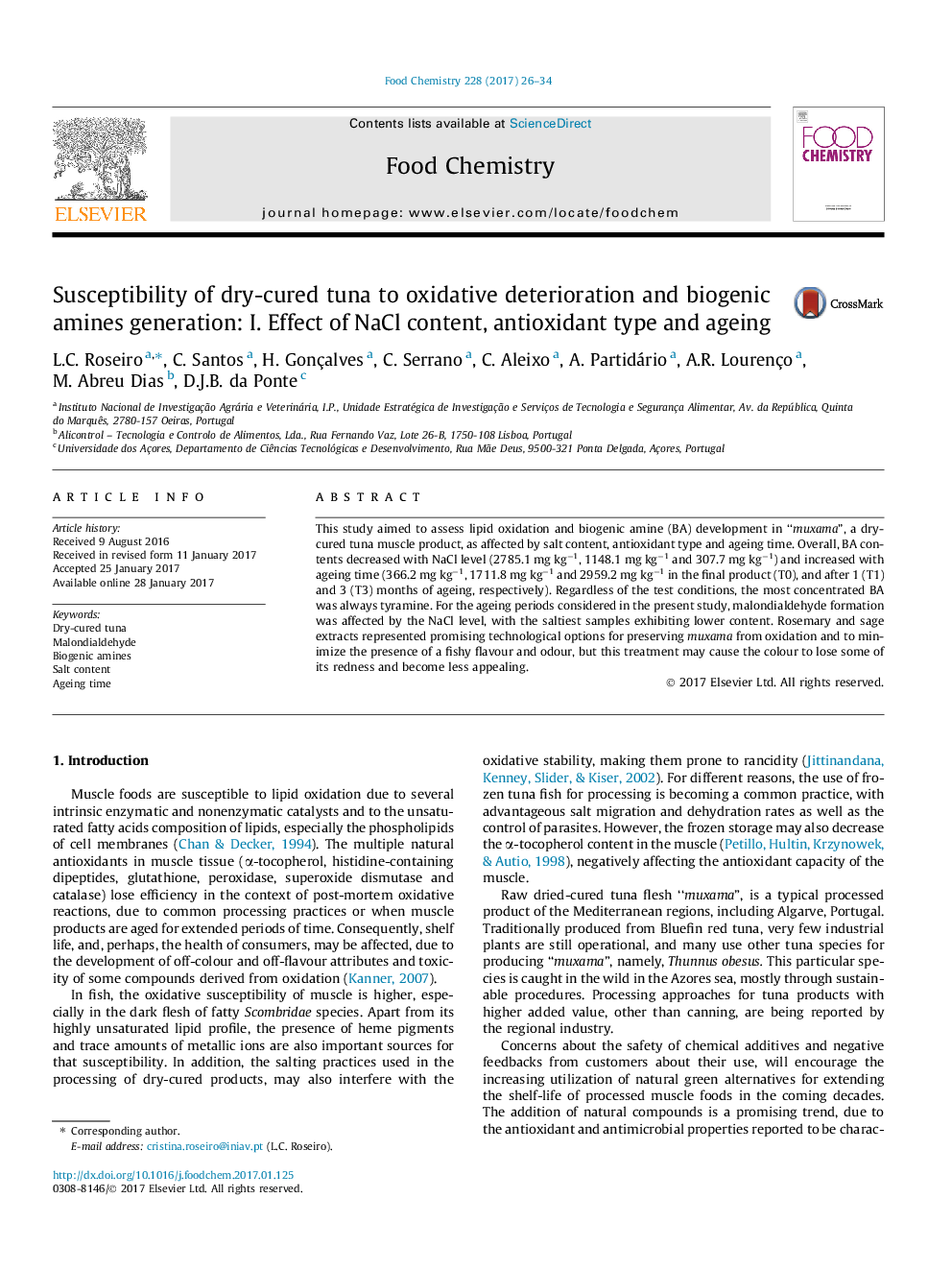| Article ID | Journal | Published Year | Pages | File Type |
|---|---|---|---|---|
| 5133813 | Food Chemistry | 2017 | 9 Pages |
â¢Biogenic amines in muxama decreased with NaCl level and increased with ageing time.â¢Tyramine was the most concentrated biogenic amine, irrespective of the ageing time.â¢Malondialdehyde content decreased with sample's ageing time and salt level.â¢Plant extracts mitigated lipid oxidation but degraded somewhat muxama's colour.â¢Aged muxama with low NaCl level may represent a biogenic amines hazard food.
This study aimed to assess lipid oxidation and biogenic amine (BA) development in “muxama”, a dry-cured tuna muscle product, as affected by salt content, antioxidant type and ageing time. Overall, BA contents decreased with NaCl level (2785.1 mg kgâ1, 1148.1 mg kgâ1 and 307.7 mg kgâ1) and increased with ageing time (366.2 mg kgâ1, 1711.8 mg kgâ1 and 2959.2 mg kgâ1 in the final product (T0), and after 1 (T1) and 3 (T3) months of ageing, respectively). Regardless of the test conditions, the most concentrated BA was always tyramine. For the ageing periods considered in the present study, malondialdehyde formation was affected by the NaCl level, with the saltiest samples exhibiting lower content. Rosemary and sage extracts represented promising technological options for preserving muxama from oxidation and to minimize the presence of a fishy flavour and odour, but this treatment may cause the colour to lose some of its redness and become less appealing.
